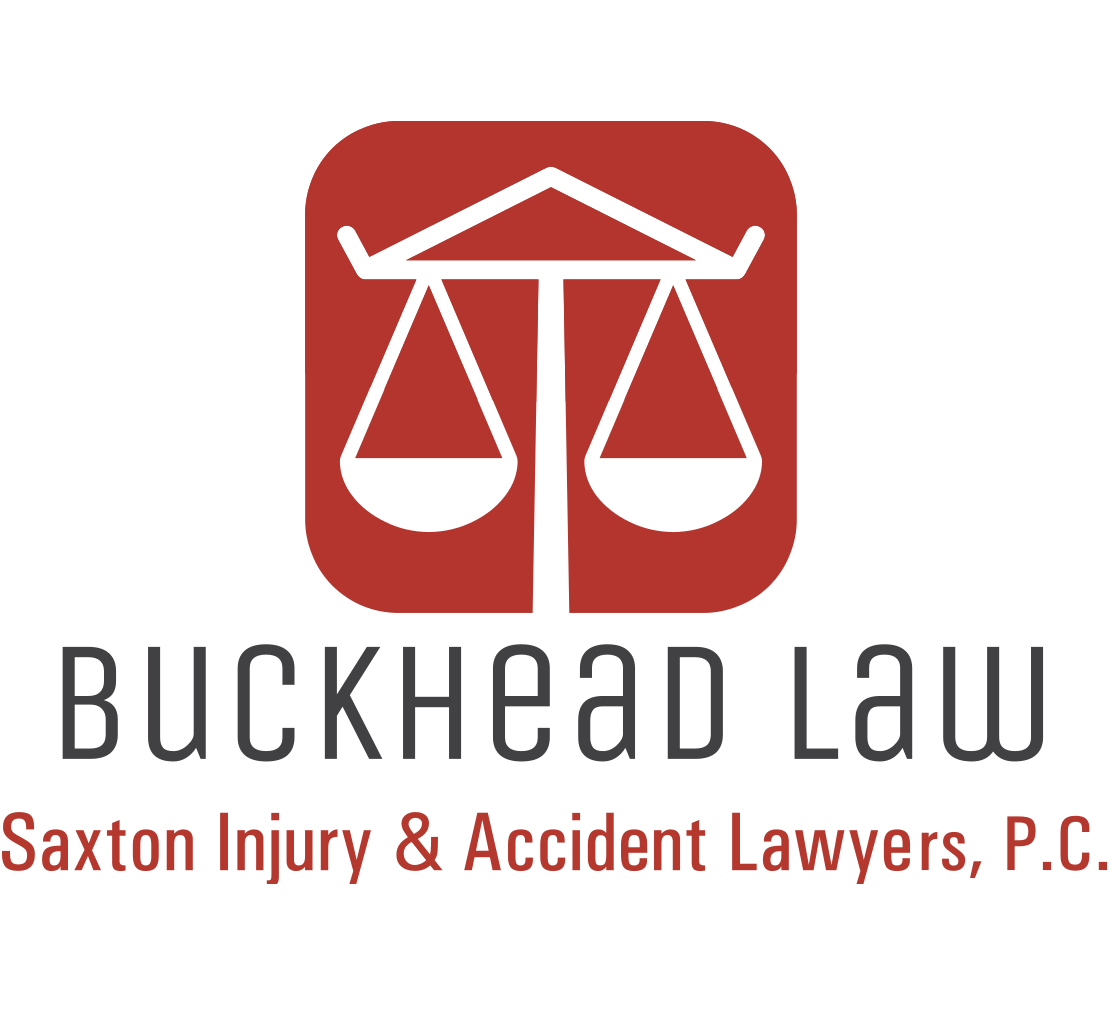Head-on car crashes are among the most severe and potentially fatal types of accidents. These accidents – that frequently occur at high speeds – happen when the front of one vehicle strikes the front of an oncoming vehicle.
In most scenarios, these accidents occur when other drivers are negligent, such as bypassing other vehicles in a designated no-passing zone or engaging in distracted or intoxicated driving.
If you or a person you love suffered injuries in a head-on car crash, you must immediately consult with an experienced car accident attorney. Your attorney can promptly investigate your accident circumstances, gather documents, file a personal injury claim, and negotiate with the insurance company.
If litigation becomes necessary in your case, your lawyer can file a lawsuit in court, take your case to trial, and bring your case to an efficient resolution.
How Do Head-on Accidents Happen?
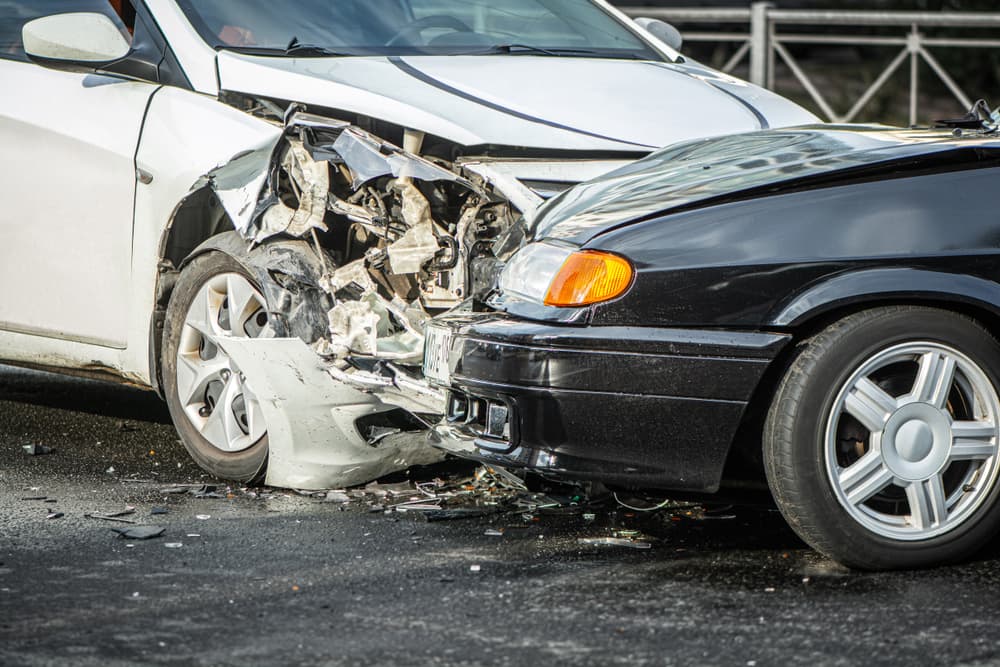
Several factors may contribute to head-on car collisions, and understanding them is crucial for promoting road safety.
Those factors include:
- Driver Distraction – Distracted driving is a leading cause of head-on collisions. When drivers divert their attention from the road, whether by using mobile phones, adjusting in-car entertainment systems, or engaging in other activities, they are at an increased risk of veering into oncoming traffic.
- Impaired Driving – Operating a vehicle while under the influence of alcohol or drugs significantly affects a driver’s ability to maintain control of their vehicle. Impaired judgment, slowed reaction times, and altered coordination increases the likelihood of a driver crossing the centerline and causing a head-on crash.
- Fatigue – Fatigued or drowsy driving can be as dangerous as impaired driving. When drivers are excessively tired, their focus wavers, and they may inadvertently drift into the opposite lane, leading to a head-on collision.
- Speeding – Excessive speed is a major contributor to head-on crashes. High speeds reduce a driver’s reaction time, making navigating curves or sudden obstacles more challenging. Speeding, especially on narrow or winding roads, increases the risk of unintentionally crossing into oncoming traffic.
- Poor Visibility – Inadequate visibility due to adverse weather conditions, such as fog, heavy rain, or snow, can contribute to head-on collisions. Reduced visibility makes it difficult for drivers to judge the distance to oncoming vehicles and increases the likelihood of inadvertently crossing the centerline.
- Reckless Overtaking – Attempting to overtake another vehicle without proper visibility or in a no-passing zone can lead to head-on collisions. Drivers who take unnecessary risks when passing other vehicles increase the danger of colliding with oncoming traffic.
- Road Design and Conditions – Poor road design, lack of proper signage, or insufficient road maintenance can contribute to head-on collisions. Blind curves, poorly marked lanes, and inadequate road markings can confuse drivers and increase the risk of unintentional lane departure.
- Medical Emergencies – Sudden medical events, such as a heart attack or seizure, can cause drivers to lose control of their vehicles and cross into oncoming traffic. These unforeseen emergencies contribute to head-on collisions without any intentionally reckless behavior.
Preventing head-on car crashes requires a multi-faceted approach, including public awareness campaigns, improved road design, and stricter enforcement of traffic safety laws. Other rivers are crucial in reducing these accidents by staying attentive, avoiding distractions, and following speed limits and traffic regulations.
Where Do Head-on Accidents Happen?
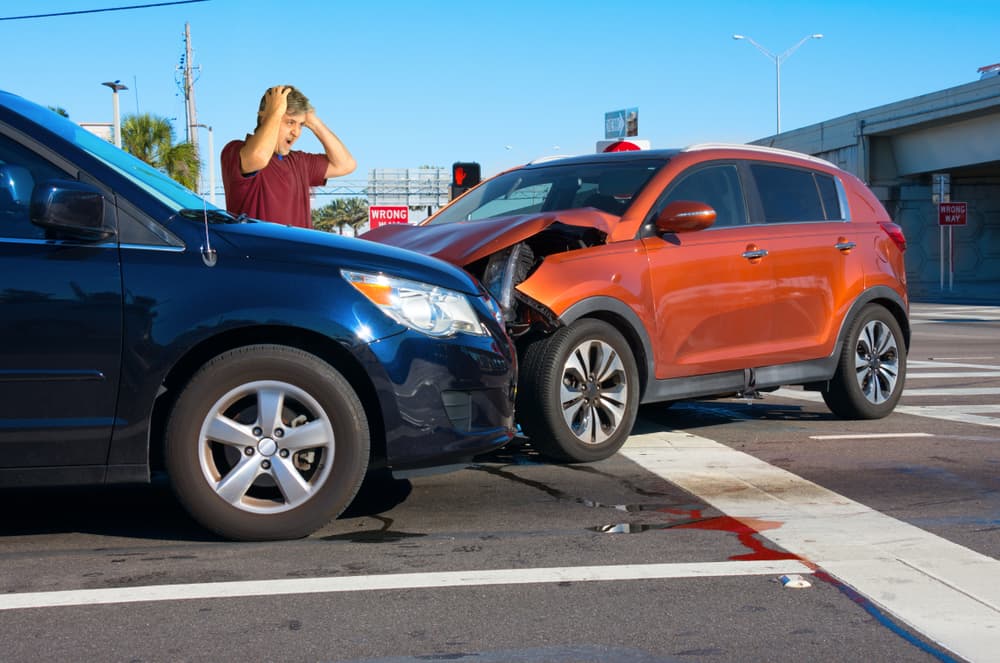
Head-on traffic accidents due to another driver’s negligence can occur in various locations, each presenting risks.
Understanding these common locations is essential for drivers to exercise caution and reduce the likelihood of such accidents:
- Intersections are frequent sites for head-on collisions, often caused by drivers running red lights or stop signs. Failure to yield the right-of-way or misjudging the timing of a turn can result in a vehicle crossing into the path of oncoming traffic.
- Curves and Bends – Sharp curves or bends in the road pose a risk, especially when drivers navigate them at high speeds. If a driver fails to stay within their lane while negotiating a curve, it can lead to a head-on collision with vehicles approaching from the opposite direction.
- Divided Highways and Medians – On highways with divided lanes, drivers may inadvertently cross medians or barriers and enter oncoming traffic. This can happen due to distraction, impairment, or misjudgment.
- One-way Streets – Accidents on one-way streets can occur when a driver enters the street in the wrong direction, potentially colliding head-on with vehicles lawfully traveling in the correct direction.
- Rural Roads – Narrow and winding rural roads can be challenging, especially if drivers are unfamiliar with the terrain or fail to adjust their speed accordingly. Head-on collisions are more likely in situations with limited visibility, such as hilly or poorly illuminated roads.
- Construction Zones – Construction zones introduce changes in traffic patterns, narrow lanes, and altered road conditions. Negligent driving in these zones, like neglecting to adhere to posted signs or decreasing speed, can lead to head-on collisions.
- Residential Areas – Accidents in residential areas may occur when drivers ignore speed limits or engage in reckless behavior. Suburban streets with parked cars on both sides can create challenges, and drivers may inadvertently cross into oncoming traffic.
- Passing Zones – Inappropriately timed passing attempts, especially on two-lane roads, can result in head-on collisions. Drivers who misjudge the distance and speed of oncoming traffic while attempting to pass another vehicle contribute to the risk.
Preventing head-on traffic accidents requires vigilance, adherence to traffic laws, and defensive driving practices. Drivers should stay focused, avoid distractions, obey road signage, and adjust their speed to match road conditions, especially in challenging environments like curves, intersections, and construction zones.
Injuries in a Head-on Crash
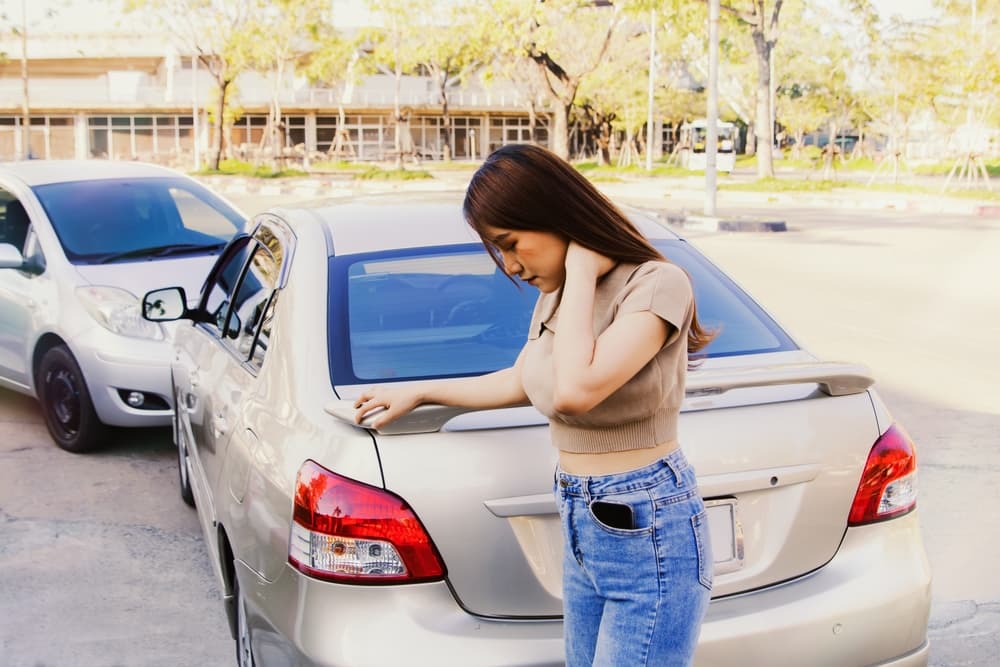
Head-on car accidents often result in severe injuries due to the force of impact when two vehicles collide directly with each other.
The life-altering injuries sustained by a victim in a head-on collision can include:
- Whiplash – Whiplash is a common injury in head-on collisions, characterized by the sudden back-and-forth motion of the head and neck. This can cause strain and damage to the soft tissues, leading to pain, stiffness, and reduced range of motion.
- Head and Brain Injuries – The impact in a head-on collision can cause the head to strike the dashboard, steering wheel, or windshield. This can result in traumatic brain injuries, including concussions, contusions, or more severe injuries that may have lasting cognitive and neurological effects.
- Spinal Cord Injuries – The force of a head-on collision can cause damage to the spinal cord, leading to paralysis or loss of sensation in different parts of the body. Spinal cord injuries often have long-term implications for mobility and quality of life.
- Chest Injuries – The chest area may suffer significant trauma in a head-on crash. Injuries such as broken ribs, sternum fractures, and damage to internal organs, including the heart and lungs, are common. The deployment of airbags can also contribute to chest injuries.
- Abdominal Injuries – Impact during a head-on collision can result in injuries to the abdomen, including damage to organs such as the liver, spleen, or kidneys. These injuries may necessitate surgical intervention and can have serious consequences.
- Fractures and Bone Injuries – The force exerted in a head-on collision can lead to fractures and broken bones throughout the body. The arms, legs, pelvis, and facial bones are commonly affected.
- Facial Injuries – Facial injuries are common due to the impact of the steering wheel, dashboard, or airbag. These injuries may include lacerations, fractures, and damage to the eyes, nose, and jaw.
In addition to physical injuries, victims of head-on collisions may experience various forms of psychological trauma, such as post-traumatic stress disorder (PTSD), depression, and anxiety. The emotional effect of a severe accident can persist long after physical injuries have healed.
Recovery from head-on collision injuries often requires extensive medical treatment, rehabilitation, and ongoing care. Seeking prompt medical attention and legal assistance is crucial for victims to address both their immediate and long-term needs following such a traumatic event.
Proving a Head-on Collision
Successfully proving the legal elements of a head-on car accident, especially when another driver is at fault, involves gathering evidence and demonstrating key elements to establish liability.
Here are essential steps to building a strong case:
- Establishing Duty of Care – The first legal element involves establishing that the at-fault driver owed a duty of care to others on the road. This duty is a basic responsibility to operate a vehicle safely and comply with traffic laws.
- Breach of Duty – To prove a breach of duty of care, one must show that the at-fault driver neglected their responsibility. This can involve violating traffic laws, engaging in reckless behavior, or failing to exercise reasonable caution.
- Causation – Causation links the breach of duty to the actual harm suffered. The at-fault driver’s actions must have caused the head-on collision and injuries. This often requires a clear timeline of events leading up to the accident.
- Proximate Cause – Proximate cause examines whether the injuries sustained were a foreseeable result of the at-fault driver’s actions. This element directly connects the negligent conduct and the victim’s harm.
- Collecting Evidence – Gathering evidence is crucial in proving the legal elements. This includes obtaining the police report, eyewitness statements, photographs of the accident scene, and any available surveillance or dashcam footage. Medical records documenting injuries and treatment are also essential.
- Accident Reconstruction – Hiring a skilled accident reconstructionist may be beneficial in complex cases. These professionals use scientific methods to recreate the accident, helping to establish the mechanics of the collision and clarify the fault.
- Eyewitness Testimony– Eyewitnesses can provide critical testimony regarding the events leading to the head-on collision. Their accounts can help corroborate the victim’s account or challenge the at-fault driver’s version of events.
- Professional Testimony – Expert witnesses, such as medical professionals, accident reconstruction specialists, or engineers, can provide testimony to support the victim’s case. Their experience lends credibility to the evidence presented.
- Maintaining Documentation – Keeping detailed records of medical treatments, expenses, and any other relevant documents is essential. These records substantiate the extent of the injuries and the financial losses incurred due to the head-on collision.
- Consulting with Legal Professionals – Seeking guidance from experienced personal injury attorneys is crucial. They can navigate the legal complexities, assess the strength of the case, and advocate on behalf of the victim to secure fair compensation.
Successfully proving the legal elements of a head-on car accident requires a comprehensive approach, combining legal experience, thorough evidence gathering, and strategic presentation of the case. Working with legal professionals ensures victims have the support to pursue justice and obtain rightful compensation for their injuries and losses.
Recovering Compensation After a Head-on Accident
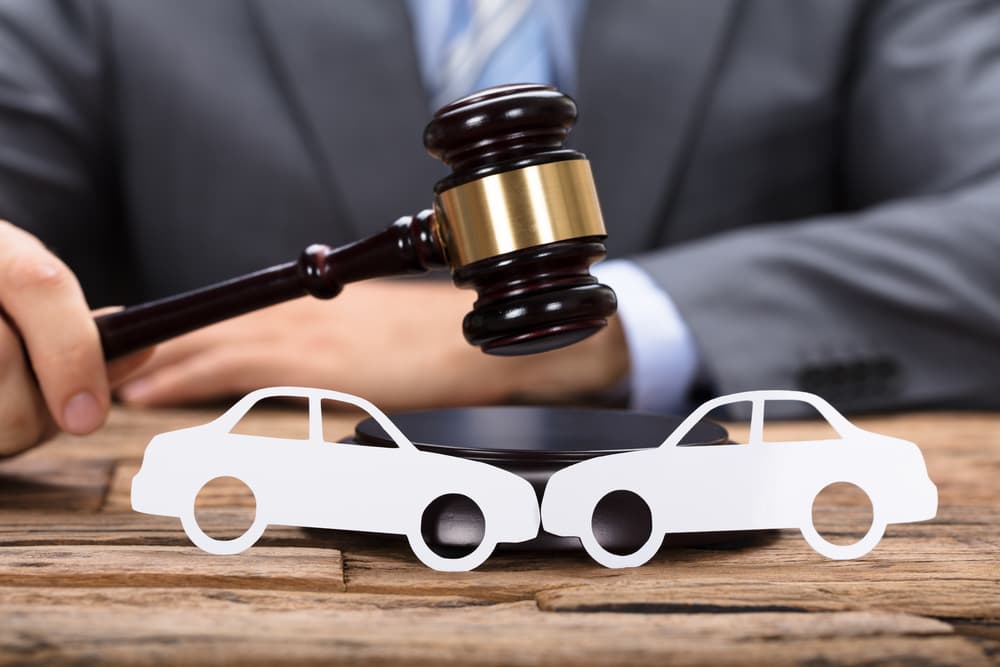
In the aftermath of a head-on car crash that results in injuries, victims may be entitled to financial damages to compensate for various losses incurred. These damages address economic and non-economic impacts on the victim’s life.
The following are the financial damages that one may recover after suffering injuries in a head-on car accident:
- Medical Expenses – Victims can seek compensation for all reasonable and necessary medical expenses resulting from their car accident. This includes compensation for ambulance fees, hospital stays, surgeries, prescription medications, and rehabilitation.
- Lost Income – If the injuries lead to a temporary work interruption, victims may recover lost income for the period during the work was not possible. This includes both past and future lost earnings.
- Diminished Earning Capacity – If the injuries lead to a permanent impairment that affects the victim’s ability to earn a living, the victim may recover damages for diminished earning capacity. This accounts for the long-term financial effect on the victim’s career and earning potential.
- Property Damage – Compensation for repairing or replacing the vehicle and other property damaged in the accident is recoverable. This includes the cost of repairs, vehicle depreciation, or the fair market value of the totaled vehicle.
- Loss of Consortium – In cases where the injuries affect the victim’s relationships and companionship with family members, spouses may recover damages for loss of consortium. This addresses the negative effect on the victim’s familial and spousal relationships.
- Mental Anguish– Compensation for mental anguish may be available for the emotional trauma, anxiety, and distress that the head-on collision caused. This recognizes the psychological impact of the accident on the victim’s mental well-being.
- Pain and Suffering – Non-economic damages, such as pain and suffering, address the physical and emotional distress the victim experienced due to their injuries. Calculating these damages is subjective and considers factors like emotional anguish, the severity of pain, and the effect on the victim’s overall quality of life.
- Future Medical Expenses – If the injuries result in long-term or permanent medical needs, victims may recover compensation for anticipated future medical expenses. This includes ongoing treatments, surgeries, and rehabilitation.
- Rehabilitation Costs– Compensation for rehabilitation and therapy costs may be available, including occupational therapy, physical therapy, and other necessary treatments to aid recovery.
- Loss of Enjoyment of Life – Victims may also seek damages for loss of life enjoyment, reflecting their diminished ability to participate in activities and pursuits they enjoyed before the accident.
Recovering financial damages after a head-on car crash requires a thorough assessment of the losses incurred. Consulting an experienced personal injury attorney can help victims navigate the legal process, accurately quantify their damages, and pursue fair compensation for their emotional, physical, and financial losses due to the accident.
Speak to a Car Accident Lawyer in Your Jurisdiction Today

If you or a loved one suffered injuries in a head-on car accident, retain experienced Savannah personal injury lawyers right away.
Your attorney will aggressively fight for your interests every step of the way and work to pursue the financial recovery you deserve through settlement or litigation.
